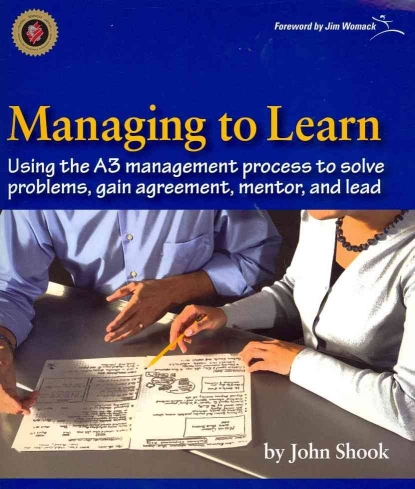Recently I re-read John Shook’s book on the A3 management process, Managing to Learn. Jim Womack’s forward to the book is so on point I think it bears quoting:
What is at the heart of Lean management and Lean leadership?
In addressing this question, Managing to Learn helps fill in the gap between our understanding of Lean tools, such as Value Stream Mapping, and the sustainable application of these tools. In the process it reveals:
- The distinction between old-fashioned, top down, command-and-control management and Lean management.
- The difference between and organization based on authority and one based on responsibility.
- The enduring benefits realized by managers who dig deep in the details to discover root causes rather than jumping to solutions.
- The power of creating Lean managers and leaders through the process of solving problems and implementing plans.
… Indeed, A3 thinking turns routine managing into cumulative learning for the whole organization.
I used to race sailboats a lot, in particular the men’s Olympic heavyweight dinghy, the International Finn. Finn sailors are a rambunctious lot who jokingly refer to a very few of the best sailors who’ve ever lived — sailors like the Dane Paul Elvstrom — as “Finn gods.” Though Finn sailors put on a show of being so naturally talented and extraordinarily manly that study, training and practice are unnecessary, they secretly study every utterance of these gods and learn all they can from them.
Jim Womack is probably as close as anybody comes to being a Lean god. His word should be taken as Lean scripture, and the ideas he lays out in the forward to Managing to Learn are fundamental to making Lean work.
UPDATE: Finn god Paul Elvstrom passed away on December 8, 2016 at age 88. An interesting and moving tribute to the man is here.

